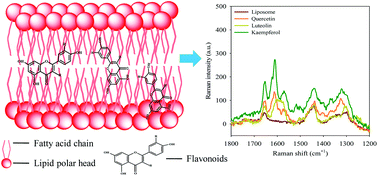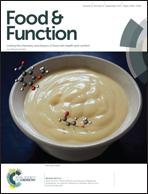Encapsulation of flavonoids in liposomal delivery systems: the case of quercetin, kaempferol and luteolin
Abstract
The instability of dietary flavonoids is currently a challenge for their incorporation in functional foods. This study investigated the protective effects of liposome encapsulation on a variety of flavonoids and their interaction mechanisms. It was found that the incorporation of flavonoids into the liposomal membrane was strongly dependent on their structure and loading concentration. Liposomes loading quercetin and luteolin exhibited a relatively small size and homogeneous suspension compared to those loading kaempferol. Additionally, liposomes displayed a stronger retaining ability to quercetin and luteolin than kaempferol during preparation, storage, heating and pH shock. After encapsulation, quercetin displayed the strongest 2,2-diphenyl-1-picrylhydrazyl (DPPH) scavenging and lipid peroxidation inhibition capacity, followed by kaempferol and luteolin. Raman and IR spectroscopy techniques demonstrated that flavonoids could modulate the dynamic and packing order of lipid chains, which were responsible for the stabilization of liposomes. Our findings should guide the rational design of liposomal encapsulation technology to efficiently deliver flavonoids in nutraceuticals and functional foods.



 Please wait while we load your content...
Please wait while we load your content...